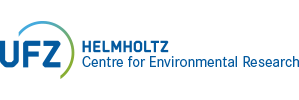Publication Details |
| Category | Text Publication |
| Reference Category | Journals |
| DOI | 10.5194/hess-29-4395-2025 |
Licence  |
|
| Title (Primary) | Unveiling the impact of potential evapotranspiration method selection on trends in hydrological cycle components across Europe |
| Author | Thakur, V.; Markonis, Y.; Kumar, R.
|
| Source Titel | Hydrology and Earth System Sciences |
| Year | 2025 |
| Department | CHS |
| Volume | 29 |
| Issue | 18 |
| Page From | 4395 |
| Page To | 4416 |
| Language | englisch |
| Topic | T5 Future Landscapes |
| Data and Software links | https://doi.org/10.5281/zenodo.17077902 |
| Supplements | Supplement 1 |
| Abstract | Hydrological models are essential tools for assessing changes in the hydrological cycle, enabling detailed quantification of runoff (Q), total water storage (TWS), and actual evapotranspiration (AET). Precipitation (P) and potential evapotranspiration (PET) are the two major drivers in modeling these components, with the influence of P more extensively studied than PET. This study evaluates the impact of PET method selection on AET, Q, and TWS using 12 PET formulations categorized as temperature-based, radiation-based, and combinational. We applied the mesoscale Hydrological Model (mHM) to simulate 40 years of hydrological components across 553 European catchments. PET effects were analyzed through trend analysis and the data concurrence index (DCI) across three catchment categories: energy-limited, mixed, and water-limited. Our results indicate that annual and seasonal trends are variably sensitive to method choice, depending on each component and catchment category. While PET shows strong agreement in trend direction, trend magnitudes vary among different PET methods. Jensen–Haise consistently produces the highest annual and seasonal PET trend magnitudes, whereas no single method consistently yields the lowest. AET trends generally align with PET but are weaker in magnitude on an annual scale. Seasonally, only energy-limited catchments show AET trends similar to PET. For Q and TWS, most European catchments exhibit strong trend agreement across PET methods. As expected, summer is the primary contributor to annual PET trends, while for AET, its influence is most notable in energy-limited catchments. Looking at statistically significant trends, there is general agreement for PET and AET, which decline for the other hydroclimatic variables. On an annual scale, varying patterns of hydrological cycle intensification (increases in P, AET, Q, and TWS) are observed across European catchments, highlighting the influence of PET method selection. Overall, this study highlights how the PET method selection affects the quantification of hydrological trends, emphasizing the importance of method selection for robust assessment of AET, Q, and TWS. |
| Persistent UFZ Identifier | https://www.ufz.de/index.php?en=20939&ufzPublicationIdentifier=31353 |
| Thakur, V., Markonis, Y., Kumar, R., Thomson, J.R., Vargas Godoy, M.R., Hanel, M., Rakovec, O. (2025): Unveiling the impact of potential evapotranspiration method selection on trends in hydrological cycle components across Europe Hydrol. Earth Syst. Sci. 29 (18), 4395 - 4416 10.5194/hess-29-4395-2025 |
|
